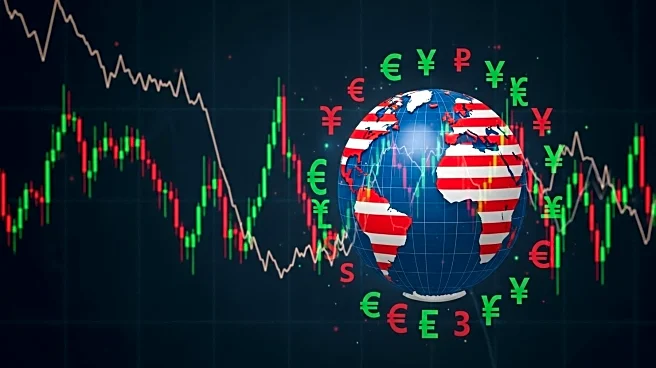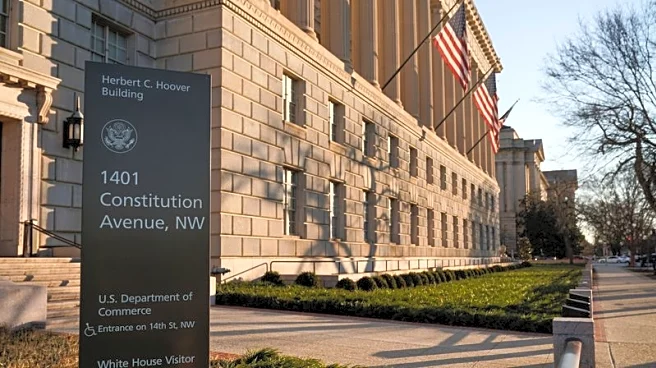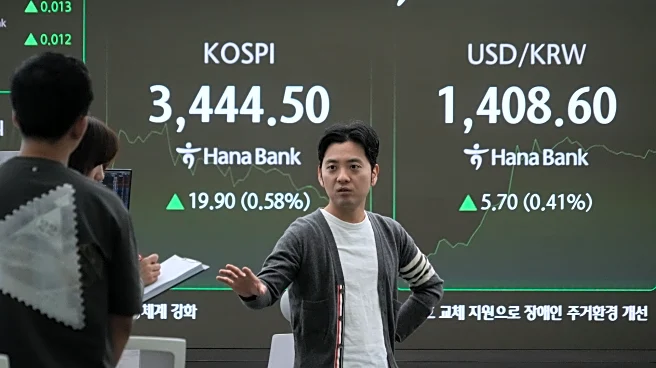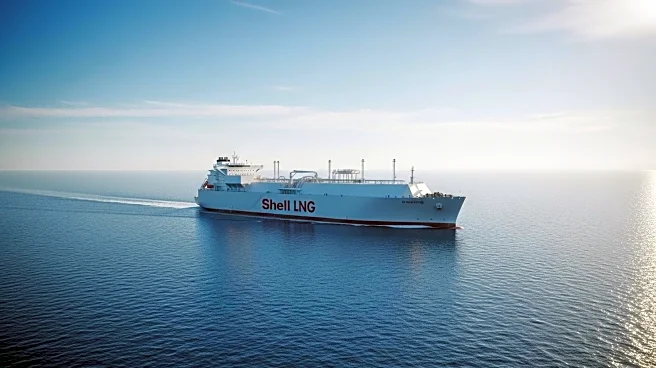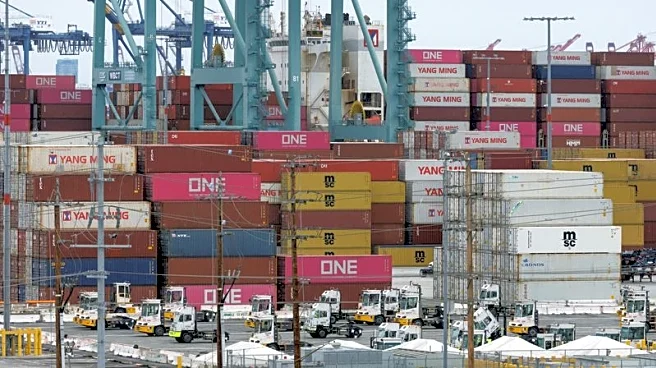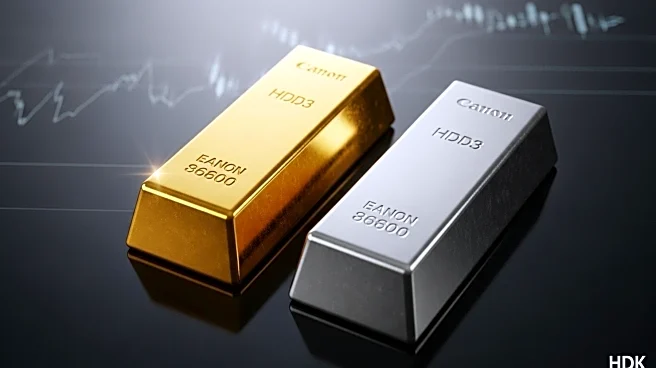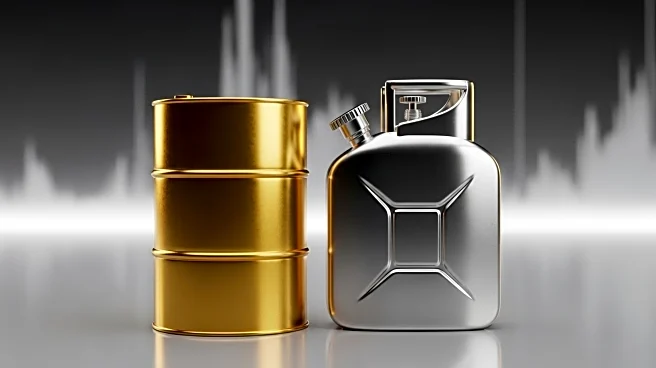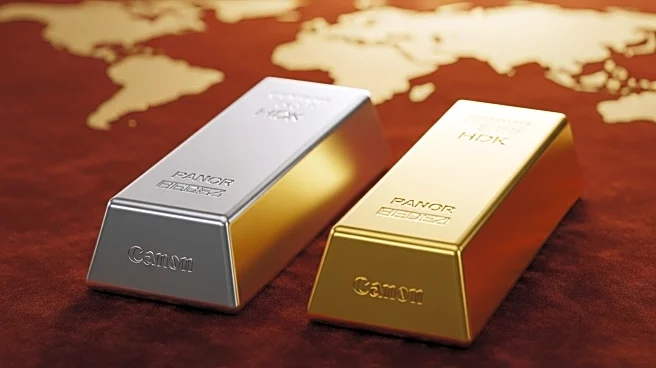What is the story about?
What's Happening?
Gold prices have reached new all-time highs, peaking around $3,895 per ounce, driven by a combination of safe-haven demand, seasonal buying, and strong central-bank appetite. Silver, platinum, and palladium have also seen significant price increases. Analysts, including those from Goldman Sachs, project that gold could reach $4,000 by mid-2026. The recent surge in precious metals is attributed to U.S. political risks, such as a partial government shutdown, and expectations of further Federal Reserve rate cuts. Additionally, Indian demand for gold and silver has surged ahead of the Diwali festival, further supporting prices.
Why It's Important?
The rise in gold prices reflects broader economic and geopolitical uncertainties, including U.S. political instability and potential economic slowdowns. As a traditional safe-haven asset, gold's increasing value indicates investor concerns about market volatility and economic health. The Federal Reserve's easing monetary policy, with potential further rate cuts, is also contributing to the attractiveness of non-yielding assets like gold. This trend could impact various stakeholders, including investors seeking stability, central banks increasing their gold reserves, and industries reliant on precious metals.
What's Next?
If the current trends continue, gold prices may continue to rise, potentially reaching the $4,000 mark by mid-2026 as projected by Goldman Sachs. The ongoing U.S. government shutdown and further Federal Reserve actions will be key factors influencing market dynamics. Additionally, global demand, particularly from India and China, will play a crucial role in shaping future price movements. Market participants will closely monitor these developments, as well as any shifts in geopolitical tensions or economic indicators.
AI Generated Content
Do you find this article useful?


